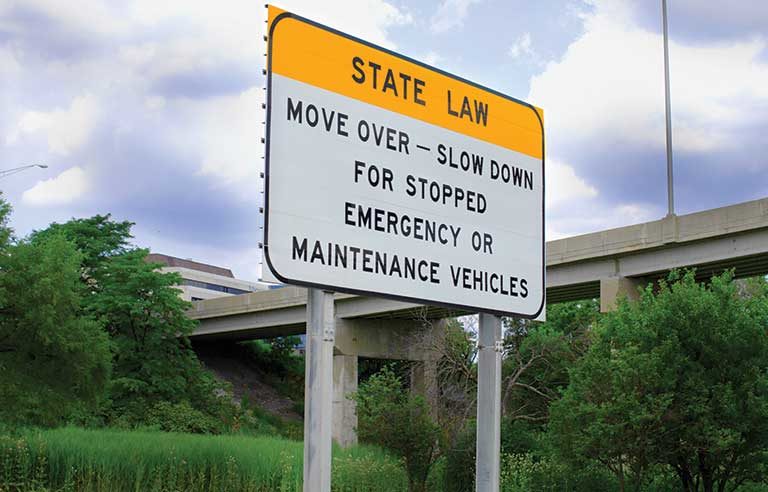Fire service groups urge drivers to follow ‘move over’ laws

Chantilly, VA — The International Association of Fire Chiefs and eight other national fire service organizations are urging drivers to exercise extra caution when approaching emergency vehicles and respect move over laws.
Move over laws are on the books in every state. Although they vary by state, the laws require drivers to change lanes, if possible, and slow down when approaching a vehicle with emergency lights or flashers on, including highway maintenance vehicles. If changing lanes is not possible, drivers must slow down – typically 5 to 20 mph under the posted speed limit, depending on the state.
More than 150 law enforcement officers have been struck and killed by vehicles on U.S. highways since 1997, according to a March 27 press release from the Department of Transportation.
“Firefighters and first responders urge your heightened awareness and attention so that they can do their jobs – in helping you and your families – without the further risk of being struck on a roadway,” the groups say in a joint statement issued Jan. 14.
The organizations have developed a resource for first responders, titled 10 Practical Tips for Responding and Operating on Roadway and Highway Incidents.
Along with IAFC President Gary Ludwig, the statement was signed by:
- Allen Baldwin, president, Cumberland Valley Volunteer Firemen’s Association/Emergency Responder Safety Institute
- G. Keith Bryant, U.S. fire administrator, U.S. Fire Administration
- Mike Duyck, president, Metropolitan Fire Chiefs Association (Metro)
- Steve Hirsch, chairman, National Volunteer Fire Council
- Leigh Hubbard, executive director, International Society of Fire Service Instructors
- Harold A. Schaitberger, general president, International Association of Fire Fighters
- Ron Siarnicki, executive director, National Fallen Firefighters Foundation
- Eric Valliere, chairman, Fire Department Safety Officers Association
Post a comment to this article
Safety+Health welcomes comments that promote respectful dialogue. Please stay on topic. Comments that contain personal attacks, profanity or abusive language – or those aggressively promoting products or services – will be removed. We reserve the right to determine which comments violate our comment policy. (Anonymous comments are welcome; merely skip the “name” field in the comment box. An email address is required but will not be included with your comment.)
